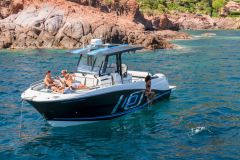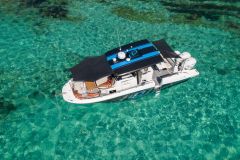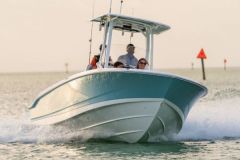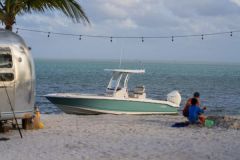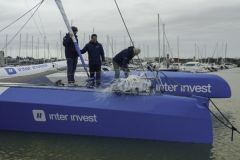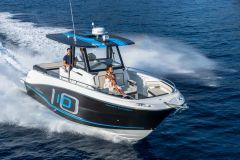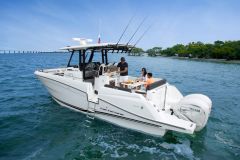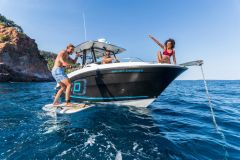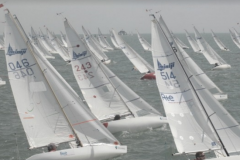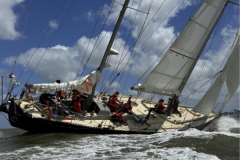A challenge to meet
Jeanneau presented Nautic de Paris 2018 a model of his Sun Fast 3300, an IRC racing cruiser. The model has finally given way to a real boat. And it's a beautiful, freshly unwrapped white hull that will be launched in La Rochelle shortly (mid-March 2019).
The Sun Fast 3300 is Jeanneau's new IRC racer. It replaces the Sun Fast 3200, with its impressive track record. Certainly, it won't be easy to do better.

Working together
Jeanneau's Hervé Piveteau is in charge of this project, and the former mini racer has been heavily involved in the design of this racing yacht.
To rise to the challenge, the shipyard took a singular approach. Jeanneau called on two independent architects to combine their talents.

Daniel Andrieu is a well-known Jeanneau architect, having designed the latest Sun Fast boats, and is above all an eminent specialist in IRC rules.
The yard asked him to choose a partner I suggested Guillaume Verdier, who is currently the best in the business and at the cutting edge of architecture ". In fact, numerical calculation methods and the study of fluids are his speciality, and he also knows the constraints of ocean racing.
Digital hull design
In addition to the voluminous bow, the visual distinguishing feature of this boat is the inversion of the hull curves forward and aft of the keel. These two concaves are the result of numerical calculations. Guillaume Verdier explains that he designs a hull that sails through software in a digital hull tank. Thus " discover the causes and effects of geometric variables ".

Why concaves under the hull?
" These two inversions of the curves are the result of a pressure distribution logic imposed on the boat "Guillaume Verdier explains simply. And he adds " It's not so new: we made this proposal to Team New Zealand during the America's Cup and they accepted ". These concaves can also be found on the hull of the Pogo3 (Mini 6.50), also designed by Guillaume Verdier and which has been shining on the Mini circuit since 2015.
An IRC hull
The thick bow may come as a surprise, but calculations have shown that the pressure is distributed more evenly over the forward part of the boat. " The wide bow pushes the water ahead very early on. This contributes to the dynamic lengthening of the hull ". According to Daniel Andrieu, "the he rear concave tends to propel the hull forward, thus reducing overall drag ". The concaves also act to virtually lengthen the short waterline.
The IRC, like all gauges, has its preferences. For Daniel Andrieu, " IRC favours short waterline length ". As it happens, the hull study produced a boat that was relatively short at the waterline in relation to its overall length.
In addition, the hull's center of gravity has been moved back, so as on all modern racing yachts, the rig is positioned further aft. The mainsail offers greater finesse, and the genoa is highly propulsive.
Available soon
The yard has not yet officially communicated on the price, but a base price of between ?100,000 and ?110,000 excluding VAT is being mooted. We can't wait to see the first confrontations on the water, the Spi Ouest France which takes place at Easter 2019. The confrontation between the "old" Sun Fast 3200 and the new 3300 should be thrilling.








